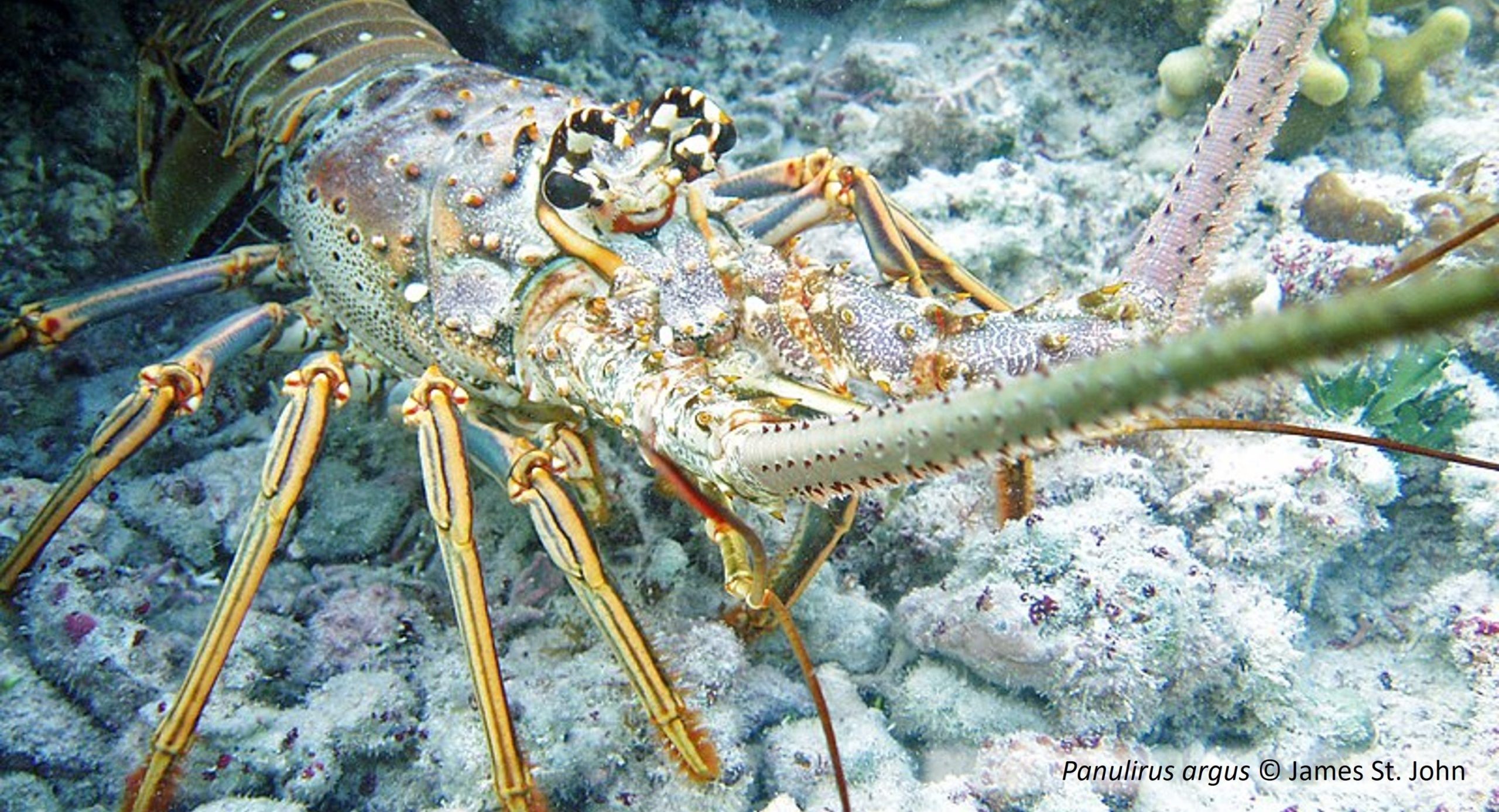Fishing of Caribbean spiny lobsters (Panulirus argus) generates close to one billion dollars each year. Such intensive exploitation can pose a threat to the species. Appropriate fishing regulations, especially at the local level, are therefore of prime importance in preserving populations. The implementation of these measures requires a good knowledge of the biology of the species, including knowing how to reliably determine the sexual maturity of these crustaceans.
In a recently published study, Nicole Atherley and her colleagues assessed sexual maturity in Caribbean spiny lobsters using different methods. The crustaceans were collected monthly around Saint Kitts and Nevis for over a year and a half. In total, more than 300 lobsters, male and female, were examined.
The researchers differentiated between physiological maturity, characterized by mature gonads capable of producing eggs or sperm, and functional maturity, corresponding in females to the development of external characteristics essential for mating (well-positioned spermatophore, eggs present on abdomen, etc.). Sexual maturity was determined through a gross assessment of individuals, histological analyses (observations under a microscope) of the gonads, and the calculation of a so-called ‘gonadosomatic index’, often used in crustaceans, and taking into account the importance of the weight of the gonads in relation to the length of individuals.
These analyses led to a better specification of the methodology to be applied for reliable results, while providing valuable knowledge on the biology of the species. Thanks to their monthly monitoring, the researchers were able to determine the critical period for the reproduction of lobsters, from March to May. They also specify the size from which the individuals can be considered as sexually mature and therefore able to reproduce. These two parameters are particularly important to define appropriate fishing regulations, respectively the season when fishing can be authorized (outside the reproduction period) and a minimum size below which individuals should not be collected.
As the authors point out, the size at which crustaceans are able to reproduce may vary, in particular in relation to temperature or fishing pressure. They therefore encourage similar studies in other territories where the species is present in order to determine locally adapted regulations.
About the author
Born in Barbados, Nicole Atherley is currently completing her doctorate at the Ross University in Saint Kitts & Nevis. Her doctorate was made possible thanks to the training program for young Caribbean experts set up by Caribaea Initiative.
Reference
Atherley, N.A.M., Dennis, M.M., Behringer, D.C. & Freeman, M.A. (2021). Size at sexual maturity and seasonal reproductive activity of the Caribbean spiny lobster, Panulirus argus. Marine Ecology Progress Series 671: 129-145.

